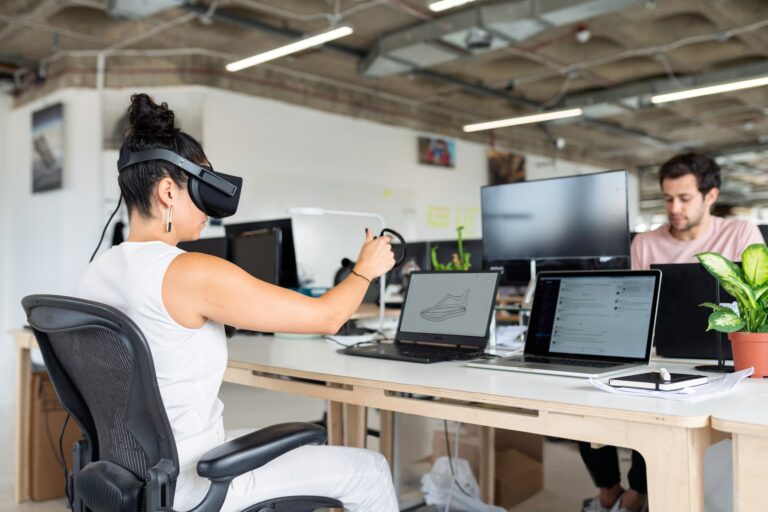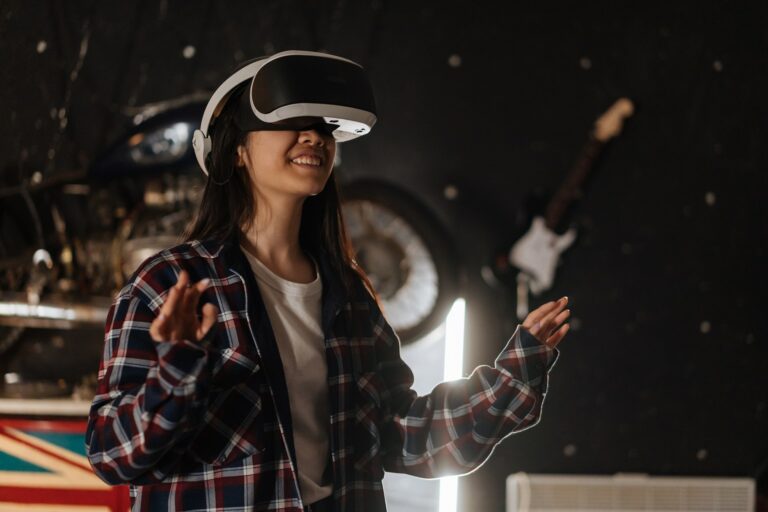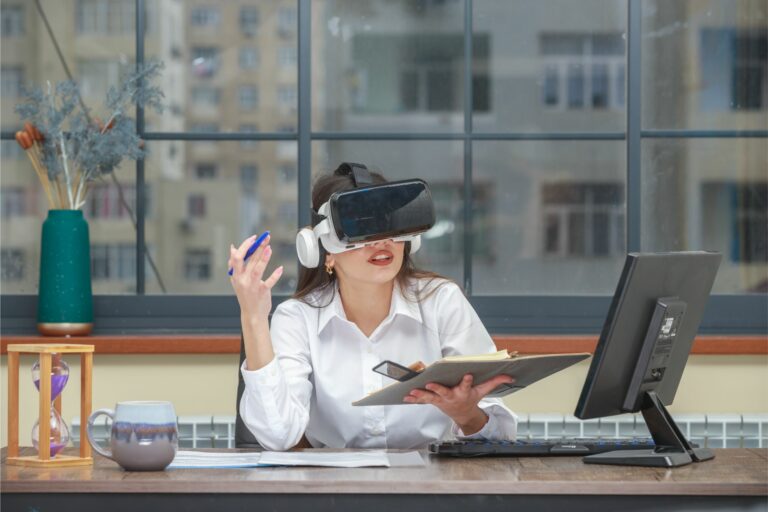Introduction
Imagine a world where you can explore distant galaxies, learn new skills, and interact with others without leaving the comfort of your own home. This is the future that virtual reality (VR) promises to bring. VR technology has come a long way in recent years, and its potential to revolutionize various aspects of our lives is truly boundless. In this article, we will delve into the exciting world of VR and explore how it is set to transform our lives in the coming years.
Table of Contents
- Understanding Virtual Reality
- The Evolution of VR Technology
- VR in Entertainment and Gaming
- VR in Education and Training
- VR in Healthcare
- VR in Business and Collaboration
- VR in Travel and Exploration
- VR in Social Interaction
- The Challenges and Future of VR
- Conclusion
- FAQs
Understanding Virtual Reality
Virtual reality refers to a simulated experience that can be similar to or completely different from the real world. By using a combination of high-quality visuals, immersive audio, and interactive technologies, VR creates a virtual environment that users can explore and interact with. This technology typically involves wearing a headset that tracks the user’s movements, allowing them to feel present and engaged in the virtual world.
The Evolution of VR Technology
VR technology has undergone remarkable advancements over the years. From its early beginnings as bulky and expensive prototypes, VR devices have become more accessible, lightweight, and affordable. The development of high-resolution displays, motion sensors, and hand-tracking controllers has significantly enhanced the immersion and realism of VR experiences. As technology continues to progress, we can expect even more impressive developments in the future.
VR in Entertainment and Gaming
One of the most prominent applications of VR is in the realm of entertainment and gaming. VR gaming allows players to step into virtual worlds, becoming fully immersed in the action and adventure. With realistic graphics, 360-degree views, and interactive gameplay, VR games offer an unprecedented level of engagement and thrill. Whether it’s exploring fantasy realms, racing in high-speed cars, or battling enemies in outer space, VR gaming provides a unique and exhilarating experience.
VR in Education and Training
Virtual reality has the potential to revolutionize education and training by providing immersive and interactive learning experiences. Imagine students being transported to historical events or science fiction landscapes, where they can witness and participate in the lessons being taught. VR can also be used for specialized training, such as medical simulations, where students can practice procedures in a safe and controlled virtual environment. This technology has the power to make learning more engaging, memorable, and effective.
VR in Healthcare
The healthcare industry is another area where VR is making significant strides. VR is being used for pain management, rehabilitation, and mental health treatments. By creating virtual environments that distract and relax patients, VR can alleviate pain and discomfort during medical procedures. Additionally, VR-based therapies are proving to be effective in treating phobias, anxiety disorders, and post-traumatic stress disorder (PTSD). The integration of VR in healthcare has the potential to improve patient outcomes and enhance the overall quality of care.
VR in Business and Collaboration
In the business world, VR is transforming the way companies collaborate and conduct meetings. Instead of traveling long distances for face-to-face meetings, VR enables individuals to meet in virtual conference rooms, interact with 3D models, and share ideas in real-time. This not only saves time and resources but also promotes global collaboration and inclusivity. Furthermore, VR can be used for virtual product demonstrations, allowing customers to experience products before making a purchase.
VR in Travel and Exploration
Virtual reality has the power to transport us to new places and open up a world of exploration. With VR, you can visit famous landmarks, explore remote destinations, and experience different cultures, all from the comfort of your own home. This technology has the potential to revolutionize the travel industry by providing immersive travel experiences and enticing travelers to visit destinations they may not have considered before. Virtual tourism allows people to satisfy their wanderlust while minimizing the environmental impact of physical travel.
VR in Social Interaction
As technology continues to evolve, VR is becoming increasingly social. Virtual reality social platforms enable users to connect and interact with others in virtual environments. Whether it’s attending virtual parties, collaborating on projects, or simply hanging out with friends in virtual spaces, VR enhances social interactions by creating a sense of presence and shared experiences. This has the potential to bridge the gap between physical and virtual relationships, making distance less of a barrier to meaningful connections.
The Challenges and Future of VR
While VR holds immense promise, it also faces several challenges. Some of these challenges include the high cost of quality VR devices, the need for powerful hardware to run VR applications, and the potential health risks associated with prolonged use. However, as technology advances and becomes more accessible, these challenges are likely to be overcome.
The future of VR is incredibly exciting. We can anticipate advancements such as higher resolution displays, more realistic haptic feedback, and improved wireless capabilities. As VR becomes more mainstream, it will continue to revolutionize industries, enhance human experiences, and unlock new possibilities we have yet to imagine.
Conclusion
Virtual reality is poised to revolutionize our lives in numerous ways. From entertainment and education to healthcare and business, VR has the potential to transform industries and redefine human experiences. As technology continues to evolve, we must embrace the boundless potential of VR and prepare for a future where the lines between the physical and virtual worlds blur.
FAQs
Q1: How much does a VR headset cost?
A1: The cost of VR headsets varies depending on the brand and features. Entry-level headsets can start around $300, while high-end devices can cost upwards of $1,000.
Q2: Can VR be used for fitness and exercise?
A2: Yes, VR can be utilized for fitness and exercise. There are VR games and applications specifically designed for physical activity, such as boxing, dancing, and yoga.
Q3: Are there any motion sickness concerns with VR?
A3: Some individuals may experience motion sickness or discomfort when using VR, especially during intense or fast-paced experiences. However, advancements in VR technology are addressing this issue to minimize discomfort.
Q4: Is VR suitable for all age groups?
A4: While VR can be enjoyed by people of various age groups, it’s essential to consider the recommended age restrictions for specific VR content. Some experiences may not be suitable for young children due to their developmental stage.
Q5: Can VR replace real-life experiences?
A5: While VR can provide immersive and realistic experiences, it cannot fully replace real-life experiences. VR should be seen as a complement to physical experiences, offering unique opportunities and perspectives.




